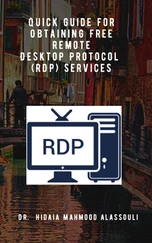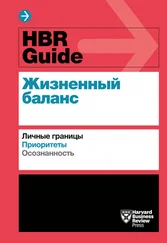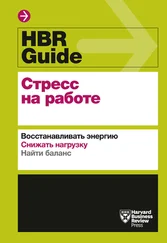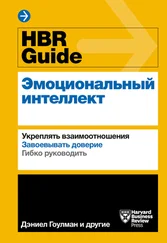Mount Sinai Expert Guides
Здесь есть возможность читать онлайн «Mount Sinai Expert Guides» — ознакомительный отрывок электронной книги совершенно бесплатно, а после прочтения отрывка купить полную версию. В некоторых случаях можно слушать аудио, скачать через торрент в формате fb2 и присутствует краткое содержание. Жанр: unrecognised, на английском языке. Описание произведения, (предисловие) а так же отзывы посетителей доступны на портале библиотеки ЛибКат.
- Название:Mount Sinai Expert Guides
- Автор:
- Жанр:
- Год:неизвестен
- ISBN:нет данных
- Рейтинг книги:4 / 5. Голосов: 1
-
Избранное:Добавить в избранное
- Отзывы:
-
Ваша оценка:
- 80
- 1
- 2
- 3
- 4
- 5
Mount Sinai Expert Guides: краткое содержание, описание и аннотация
Предлагаем к чтению аннотацию, описание, краткое содержание или предисловие (зависит от того, что написал сам автор книги «Mount Sinai Expert Guides»). Если вы не нашли необходимую информацию о книге — напишите в комментариях, мы постараемся отыскать её.
Mount Sinai Expert Guides — читать онлайн ознакомительный отрывок
Ниже представлен текст книги, разбитый по страницам. Система сохранения места последней прочитанной страницы, позволяет с удобством читать онлайн бесплатно книгу «Mount Sinai Expert Guides», без необходимости каждый раз заново искать на чём Вы остановились. Поставьте закладку, и сможете в любой момент перейти на страницу, на которой закончили чтение.
Интервал:
Закладка:
Andre Sotelo, MDCritical Care Attending Hackensack University Medical Center Hackensack, NJ, USA
Rupendra Swarup, MDAssistant Professor Icahn School of Medicine at Mount Sinai Director, Neurosurgery Intensive Care Unit Mount Sinai Morningside‐West New York, NY, USA
Kiumars Ranjbar Tabar, MDDepartment of Surgery Allegheny Health Network Pittsburgh, PA, USA
Parissa Tabrizian, MDRecanati/Miller Transplantation Institute Icahn School of Medicine at Mount Sinai New York, NY, USA
Rami O. Tadros, MDAssociate Professor of Surgery Icahn School of Medicine at Mount Sinai New York, NY, USA
Ajay S. Vaidya, MDAssistant Professor of Clinical Medicine Keck School of Medicine of USC Los Angeles, CA, USA
Jennifer Wang, DOAssistant Professor of Medicine Icahn School of Medicine at Mount Sinai New York, NY, USA
Eric S. Weiss, MD, MPHAurora Cardiovascular and Thoracic Surgery Aurora Health Care Milwaukee, WI, USA
Ewelina Wojtaszek, MDRobert Wood Johnson Barnabas Health New Brunswick, NJ, USA
Jiyeoun Yoo, MDAssistant Professor of Neurology Icahn School of Medicine at Mount Sinai New York, NY, USA
David Young, DOAttending, Pulmonary Critical Care Reading Hospital Wyomissing, PA, USA
Series Foreword
Now more than ever, immediacy in obtaining accurate and practical information is the coin of the realm in providing high quality patient care. The Mount Sinai Expert Guides series addresses this vital need by providing accurate, up‐to‐date guidance, written by experts in formats that are accessible in the patient care setting: websites, smartphone apps, and portable books. The Icahn School of Medicine, which was chartered in 1963, embodies a deep tradition of pre‐eminence in clinical care and scholarship that was first shaped by the founding of the Mount Sinai Hospital in 1855. Today, the Mount Sinai Health System, comprised of seven hospitals anchored by the Icahn School of Medicine, is one of the largest health care systems in the United States, and is revolutionizing medicine through its embracing of transformative technologies for clinical diagnosis and treatment. The Mount Sinai Expert Guides series builds upon both this historical renown and contemporary excellence. Leading experts across a range of disciplines provide practical yet sage advice in a digestible format that is ideal for trainees, mid‐level providers, and practicing physicians. Few medical centers in the United States could offer this type of breadth while relying exclusively on its own physicians, yet here no compromises were required in offering a truly unique series that is sure to become embedded within the key resources of busy providers. In producing this series, the editors and authors are fortunate to have an equally dynamic and forward‐viewing partner in Wiley Blackwell, which together ensures that health care professionals will benefit from a unique, first‐class effort that will advance the care of their patients.
Scott Friedman MDSeries EditorDean for Therapeutic DiscoveryFishberg Professor and Chief, Division of Liver DiseasesIcahn School of Medicine at Mount SinaiNew York, NY, USA
Preface
This book, as part of the Mount Sinai Expert Guide series, aims to guide clinicians who care for patients in critical care units. Our goal is for the clinician – whether student, trainee, or faculty – to use this book when faced with a critically ill patient in order to understand the physiology, evaluation, and management of disease.
In conjunction with the founding of Mount Sinai’s Institute for Critical Care Medicine in 2017, we have brought together experts from the Mount Sinai Health System to provide the most current knowledge of management for these complex disorders. We hope that the information and management protocols will be utilized at the bedside, and will inspire the reader to delve into the medical literature, discover, and provide the highest quality care for their patients.
We are grateful to our patients, colleagues, and teachers. We hope that our book will advance patient care, and the learning and sharing of knowledge in medicine.
Janet M. Shapiro and Stephan A. Mayer
Abbreviations
2Dtwo‐dimensional3Dthree‐dimensionalAAAabdominal aortic aneurysmAABBAmerican Association of Blood BanksABGarterial blood gasACanticoagulationACCAmerican College of CardiologyACEangiotensin‐converting enzymeACEIangiotensin‐converting enzyme inhibitorACLSadvanced cardiac life supportACSabdominal compartment syndrome; acute coronary syndrome/s; American College of SurgeonsADCapparent diffusion coefficientADHantidiuretic hormoneAECOPDacute exacerbation of chronic obstructive pulmonary diseaseAEDantiepileptic drug; automated external defibrillatorAFatrial fibrillationAFEamniotic fluid embolismAFlatrial flutterAGanion gapAHAAmerican Heart AssociationAHFacute hepatic failureAIDSacquired immune deficiency syndromeAINacute interstitial nephritisAISacute ischemic strokeAKIacute kidney injuryAKINAcute Kidney Injury NetworkALLacute lymphoblastic leukemiaALTalanine aminotransferaseAMAEacute mesenteric arterial embolismAMATacute mesenteric arterial thrombosisAMIacute mesenteric ischemiaAMLacute myeloid leukemiaANAantinuclear antibodyANCabsolute neutrophil countANPatrial natriuretic peptideAoVaortic veinAPanteroposteriorAPACHEAcute Physiologic Assessment and Chronic Health Evaluation (score)APRVairway pressure release ventilationaPTTactivated partial thromboplastin timeARASascending reticular activating systemARBangiotensin receptor blockerARDSacute respiratory distress syndromeARTantiretroviral therapyASAAmerican Society of AnesthiologistsASCVD atherosclerotic cardiovascular diseaseASIAAmerican Spinal Injury AssociationASPantimicrobial stewardship programASTaspartate aminotransferaseATatrial tachycardiaATLSadvanced traumatic life supportATNacute tubular necrosisATPadenosine triphosphateATSAmerican Thoracic SocietyAUCarea under curveAVatrioventricularAVDO2 arteriovenous difference in oxygen contentAVFarteriovenous fistulaAVMarteriovenous malformationAVNRTatrioventricular nodal re‐entrant tachycardiaAVRTatrioventricular re‐entrant tachycardiaBALbronchoalveolar lavageBBBblood–brain barrierBEARbrainstem evoked audio responseBGblood glucoseBIPAPbilevel positive airway pressureBISbispectral indexBLSbasic life supportBMIbody mass indexBMPbasic metabolic profile/panelBNPB‐type natriuretic peptideBPblood pressurebpmbeats per minuteBPSbehavioral pain scaleBSAbody surface areaBSASbedside shivering assessment scaleBUNblood urea nitrogenCABGcoronary artery bypass graftingCADcoronary artery diseaseCADASILcerebral autosomal dominant arteriopathy with subcortical infarcts and leukoencephalopathyCAPcommunity‐acquired pneumoniaCAPCCenter to Advance Palliative CareCAScarotid artery stenosisCAUTIcatheter‐associated urinary tract infectionCBCcomplete blood countCBFcerebral blood flowCDCCenters for Disease Control and PreventionCDIClostridium difficile infectionCEAcarotid endarterectomycEEGcontinuous electroencephalogramcfucolony‐forming unitCFVcommon femoral veinCHFcongestive heart failureCIcardiac indexCIMcritical illness myopathyCINcontrast‐induced nephropathyCIPcritical illness polyneuropathyCKcreatine kinaseCKDchronic kidney diseaseCLABSIcentral line‐associated bloodstream infectionCMLchronic myeloid leukemiaCMPcomprehensive metabolic profileCMRO2cerebral metabolic rate of oxygen consumptionCMSCenters for Medicare and Medicaid ServicesCMVcytomegalovirusCNIcalcineurin inhibitorCNScentral nervous systemCOcardiac outputCO2 carbon dioxideCOPDchronic obstructive pulmonary diseaseCPAPcontinuous positive airway pressureCPEcardiogenic pulmonary edemaCPMcentral pontine myelinolysisCPOTcritical care pain observation toolCPPcerebral perfusion pressureCPRcardiopulmonary resuscitationCrcreatinineCREcarbapenem‐resistant EnterobacteriaceaeCRPC‐reactive proteinCRRTcontinuous renal replacement therapyC/Sculture and sensitivityCSEconvulsive status epilepticusCSFcerebrospinal fluidCSHTcontext‐sensitive half‐timeCTcomputed tomographyCTAcomputed tomography angiogram/angiographyCVAcerebrovascular accidentCVPcentral venous pressureCVRcerebrovascular resistanceCVVHcontinuous veno‐venous hemofiltrationCVVHDcontinuous veno‐venous hemodialysisCVVHDFcontinuous veno‐venous hemodiafiltrationCXRchest X‐rayD5W5% dextrose in waterD50W50% dextrose in waterDALYsdisability‐adjusted life yearsDAPTdual antiplatelet therapyDCdirect currentDCIdelayed cerebral ischemiaDICdisseminated intravascular coagulationDKAdiabetic ketoacidosisDNIdo not intubateDNRdo not resuscitateDOACdirect oral anticoagulantDPperitoneal dialysis2,3‐DPG2,3‐diphosphoglycerateDSM‐5Diagnostic and Statistical Manual of Mental Disorders 5DTIdirect thrombin inhibitorsDVTdeep vein thrombosisDWIdiffusion weighted imagingEBVEpstein–Barr virusECCO2Rextracorporeal carbon dioxide removalECFextracellular fluidECGelectrocardiography/electrocardiogramECMOextracorporeal membrane oxygenationEDemergency departmentEEGelectroencephalography/electroencephalogramEIAenzyme immunoassayEMSemergency medical serviceEPAPend‐expiratory positive airway pressureERemergency roomESBLextended‐spectrum beta‐lactamaseESICMEuropean Society of Intensive Care MedicineESRerythrocyte sedimentation rateESRDend‐stage renal diseaseETendotracheaETCO2 end‐tidal carbon dioxideETTendotracheal tubeEVDexternal ventricular drainageFfemoralFASTfocused assessment using sonography for traumaFDAFood and Drug Administration (USA)FeNafractional excretion of sodiumFeUreafractional excretion of ureaFFPfresh frozen plasmaFiO2 fractional inspired oxygenFLAIRfluid attenuated inversion recoveryFMTfecal microbiota therapyFP24frozen plasma (within 24 hours)FRCfunctional residual capacityFVCforced vital capacityGABAgamma‐aminobutyric acidGBSGuillain–Barré syndromeGCSGlasgow Coma ScaleGERDgastroesophageal reflux diseaseGFRglomerular filtration rateGIgastrointestinalGINAGlobal Initiative for AsthmaGM‐CSFgranulocyte–macrophage colony‐stimulating factorGNBgram‐negative bacilliGOLDGlobal Initiative for Chronic Obstructive Pulmonary DiseaseGPCgram‐positive cocciGVHDgraft‐versus‐host diseaseGWguidewireH2 histamine‐2HAARThighly active antiretroviral therapyHAPhospital‐acquired pneumoniaHbhemoglobinHBVhepatitis B virusHCAPhealth care‐associated pneumoniaHCGhuman chorionic gonadotropinHcthematocritHCVhepatitis C virusHEhepatic encephalopathyHELLPhemolysis, elevated liver enzymes, low platelets (syndrome)HFNChigh flow nasal cannulaHFPEFheart failure with preserved ejection fractionHFREFheart failure with reduced ejection fractionHibHaemophilus influenza type bHIDAhepatobiliary iminodiacetic acidHITheparin‐induced thrombocytopeniaHIVhuman immunodeficiency virusHLAhuman leukocyte antigenHRheart rateHSVherpes simplex virusHThemorrhagic transformationHUShemolytic uremic syndromeIAintra‐arterialIABPintra‐aortic balloon pumpIAHintra‐abdominal hypertensionIAPintra‐abdominal pressureIBWideal body weightICDimplantable cardioverter defibrillatorICFintracellular fluidICHintracerebral hemorrhageICPintracranial pressureICUintensive care unitIDSAInfectious Diseases Society of AmericaIgimmunoglobulinIHDintermittent hemodialysisIJinternal jugularIJVinferior jugular veinILinterleukinILCORInternational Liaison Committee on ResuscitationILDinterstitial lung diseaseIMVinvasive mechanical ventilationINRinternational normalized ratioIOintraosseousIPAL‐ICUImproving Palliative Care in the ICUIPAPinspiratory positive airway pressureIPFidiopathic pulmonary fibrosisIRISimmune reconstitution inflammatory syndromeISSinjury severity scoreIVintravenousIVACinfection‐related ventilator‐associated complicationIVCinferior vena cavaIVIgintravenous immunoglobulinJVPjugular venous pressureKClpotassium chlorideLADleft anterior descending (artery)LBBBleft bundle branch blockLDloading doseLDFlaser Doppler flowmetryLDHlactate dehydrogenaseLDLlow density lipidLDUHlow dose unfractionated heparinLFTliver function testLiDCOlithium dilution cardiac outputLKMliver–kidney microsomal (antibody)LLQleft lower quadrantLMAlaryngeal mask airwayLMWlow molecular weightLMWHlow molecular weight heparinLOCloss of consciousnessLOSlength of stayLPlumbar punctureLPRlactate : pyruvate ratioLSDlysergic acid diethylamideLVleft ventricular/ventricleLVADleft ventricular assist deviceLVEDPleft ventricular end‐diastolic pressureLVEFleft ventricular ejection fractionLVOlarge vessel occlusionLVOTleft ventricular outflow tractMACMacintosh bladeMAHAmicroangiopathic hemolytic anemiaMAOImonoamine oxidase inhibitorMAPmean arterial pressureMASCCMultinational Association for Supportive Care in CancerMATmultifocal atrial tachycardiaMBCminimum bactericidal concentrationMCAmiddle cerebral arteryMDdoctor; maintenance doseMDImetered dose inhalerMDMA3,4‐methylenedioxy‐methamphetamineMDRmultidrug resistantMELDmodel for end‐stage liver diseaseMImyocardial infarctionMICminimum inhibitory concentrationMMFmycophenolate mofetilMODSmultiorgan dysfunction syndromeMRmitral regurgitationMRAmagnetic resonance angiographyMRImagnetic resonance imagingMRSAmethicillin‐resistant Staphylococcus aureusMSSAmethicillin‐sensitive Staphylococcus aureusMTPmassive transfusion protocolMVAmotor vehicle accidentMVTmesenteric venous thrombosisNasodiumNACN‐acetylcysteineNASHnon‐alcoholic steatohepatitisNCSNeurocritical Care SocietyNCSEnon‐convulsive status epilepticusNDM‐1New Delhi metallo‐beta‐lactamaseNGnasogastricNHSNNational Healthcare Safety NetworkNICE‐SUGARNormoglycemia in Intensive Care Evaluation Survival Using Glucose Algorithm Regulation (trial)NIFnegative inspiratory forceNIHNational Institutes of HealthNIHSSNational Institutes of Health Stroke ScaleNMDAN‐methyl‐d‐aspartateNNTnumber needed to treatNOMInon‐occlusive mesenteric ischemiaNPHneutral protamine HagedornNPOnil per osNPPVnon‐invasive positive pressure ventilationNQFNational Quality ForumNRTInucleoside reverse transcriptase inhibitorNSnormal saline1/2 NShalf normal salineNSAIDsnon‐steroidal anti‐inflammatory drugsNSCLCnon‐small cell lung cancerNSTE‐ACSnon‐ST elevation acute coronary syndromesNSTEMInon‐ST elevation myocardial infarctionNYHANew York Heart AssociationO2 oxygenOHSobesity hypoventilation syndromeOIopportunistic infectionOLTorthotopic liver transplantationOPTNOrgan Procurement Transplantation NetworkORodds ratio; operating roomOTCover‐the‐counterPACpulmonary artery catheterPaO2 arterial oxygen pressurePaCO2 arterial carbon dioxide pressurePADpulmonary artery diseasePAKpancreas after kidneyPAWPpulmonary artery wedge pressurePbtO2 brain tissue oxygen partial pressurePBWpredicted body weightPCpressure controlPCApatient controlled analgesiaPCCprothrombin complex concentratePCIpercutaneous coronary interventionPCPpneumocystis pneumoniaPCRpolymerase chain reactionPCWPpulmonary capillary wedge pressurePDTpercutaneous dilational tracheostomyPEpulmonary embolismPEApulseless electrical activityPEEPpositive end‐expiratory pressurePEFpeak expiratory flowPEGpercutaneous endoscopic gastrosotomyPESIPulmonary Embolism Severity IndexPETpositron emission tomographyPETCO2 peak end‐tidal partial pressure of carbon dioxidePGLpersistent generalized lymphadenopathyPHparenchymal hemorrhagePIpulsatility indexPiCCOpulse contour cardiac outputPIPpeak inspiratory pressurePLTplateletPOper osPOCpoint‐of‐carePOCUSpoint‐of‐care ultrasoundPPEparapneumonic effusionPPIproton pump inhibitorPPNpartial parenteral nutritionPRBCspacked red blood cellsPRISpropofol‐related infusion syndromePRVCpressure‐regulated volume controlPSpressure supportPSIpneumonia severity indexPSVpressure support ventilationPTprothrombin timePTApancreas transplant alonePTHparathyroid hormonePTHrPparathyroid hormone‐related peptidePTSDpost‐traumatic stress disorderPTTpartial thromboplastin timePTXpneumothoraxPVRpulmonary vascular resistanceRAright atriumRAASrenin–angiotensin–aldosterone systemRAPright arterial pressureRASSRichmond Agitation‐Sedation ScaleRBBBright bundle branch blockRBCred blood cellRCAright coronary arteryRCTrandomized controlled trialRLLright lower lobeRLQright lower quadrantRMLright middle lobeRNregistered nurseROSCreturn of spontaneous circulationRQrespiratory quotientRRrespiratory rateRRTrenal replacement therapyRSBIrapid shallow breathing indexRTSRevisited Trauma ScoreRULright upper lobeRUQright upper quadrantRUSHrapid ultrasound in shockRVright ventricular/ventricleRxtreatmentSAsubclavian arterySAHsubarachnoid hemorrhageSBPsystolic blood pressureSBTsmall bowel transplantation, spontaneous breathing trialSCsubcutaneousSCCMSociety of Critical Care MedicineSCIspinal cord injurySCLCsmall cell lung cancerScvO2 central venous oxygen saturationSIADHsyndrome of inappropriate antidiuretic hormone secretionSIMVsynchronized intermittent mandatory ventilationSIRSsystemic inflammatory response syndromeSjvO2 jugular venous oxygen saturationSLsubclavian lateral; symptomatic leukostasisSMsubclavian medialSMAsuperior mesenteric arterySMVsuperior mesenteric veinSNRIserotonin‐norepinephrine reuptake inhibitorSOFAsequential organ failure assessment (score)SOLsigns of lifeSPKsimultaneous pancreas–kidneySpO2 peripheral capillary oxygen saturationSQsubcutaneousSSEPsomatosensory evoked potentialSSRIselective serotonin reuptake inhibitorSTsinus tachycardiaSTspontaneous timedsTBIsevere traumatic brain injurySTEST elevationSTEMIST elevation myocardial infarctionSVstroke volume, subclavian veinSVCSsuperior vena cava syndromeSVRsystemic vascular resistanceSVTsupraventricular tachycardiaSWsocial workerTACOtransfusion‐associated circulatory overloadTADtransfusion‐associated dyspneaTAHtotal artificial heartTAVRtranscatheter aortic valve replacementTBtuberculosisTBItraumatic brain injuryTBSAtotal body surface areaTCAtricyclic antidepressantTDFthermal diffusion flowmetryTEEtransesophageal echocardiography/echocardiogramTIAtransient ischemic attackTIPStransjugular intrahepatic portosystemic shuntTLStumor lysis syndromeTNFtumor necrosis factortPAtissue plasminogen activatorTPNtotal parental nutritionTRALItransfusion‐related acute lung injuryTRPtubular reabsorption of phosphateTSHthyroid‐stimulating hormoneTTtracheostomy tubeTTEtransthoracic echocardiography/echocardiogramTTMtherapeutic temperature modulationTTPthrombotic thrombocytopenic purpuraTWIT wave inversionUAunstable angina; urinalysisUFHunfractionated heparinURIupper respiratory infectionUSultrasoundUSPSTFUnited States Preventive Services Task ForceUTIurinary tract infectionV‐Avenous‐arterialVACventilator‐associated conditionVADventricular assist deviceVAEventilator‐associated eventVAPventilator‐associated pneumoniaVATSvideo‐assisted thoracoscopy surgeryVBGvenous blood gasVCvital capacityVCvolume controlVFventricular fibrillationVKAvitamin K antagonistVMEviral meningoencephalitisV/Qventilation–perfusionVSvolume supportVSDventricular septal defectVTventricular tachycardiaVTEvenous thromboembolismVTIvelocity time intervalV‐Vveno‐venousvWDvon Willebrand diseasevWFvon Willebrand factorVZVvaricella zoster virusWBCwhite blood cellWFNSWorld Federation of Neurosurgeons ScaleWHOWorld Health OrganizationWPWWolff–Parkinson–White
Читать дальшеИнтервал:
Закладка:
Похожие книги на «Mount Sinai Expert Guides»
Представляем Вашему вниманию похожие книги на «Mount Sinai Expert Guides» списком для выбора. Мы отобрали схожую по названию и смыслу литературу в надежде предоставить читателям больше вариантов отыскать новые, интересные, ещё непрочитанные произведения.
Обсуждение, отзывы о книге «Mount Sinai Expert Guides» и просто собственные мнения читателей. Оставьте ваши комментарии, напишите, что Вы думаете о произведении, его смысле или главных героях. Укажите что конкретно понравилось, а что нет, и почему Вы так считаете.











